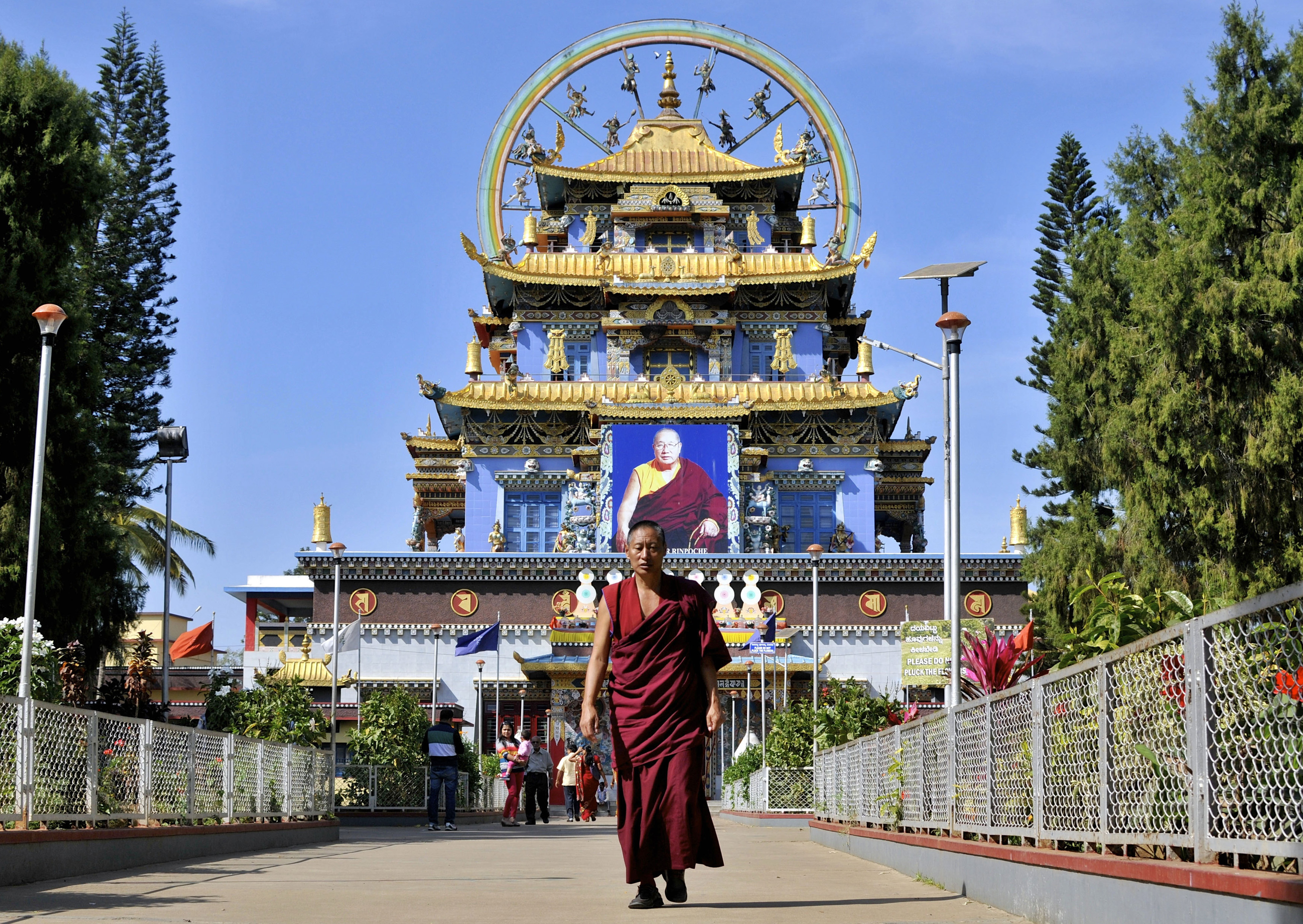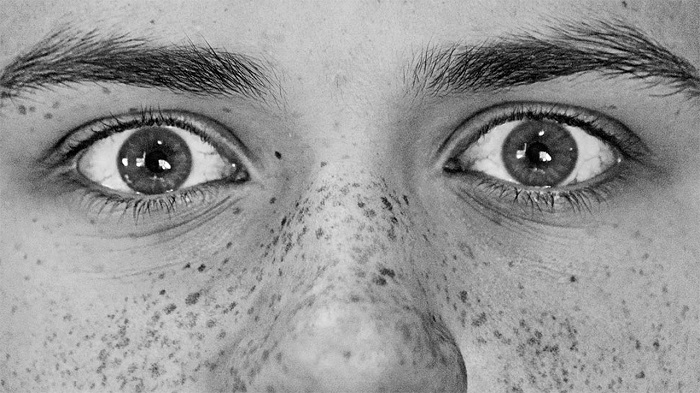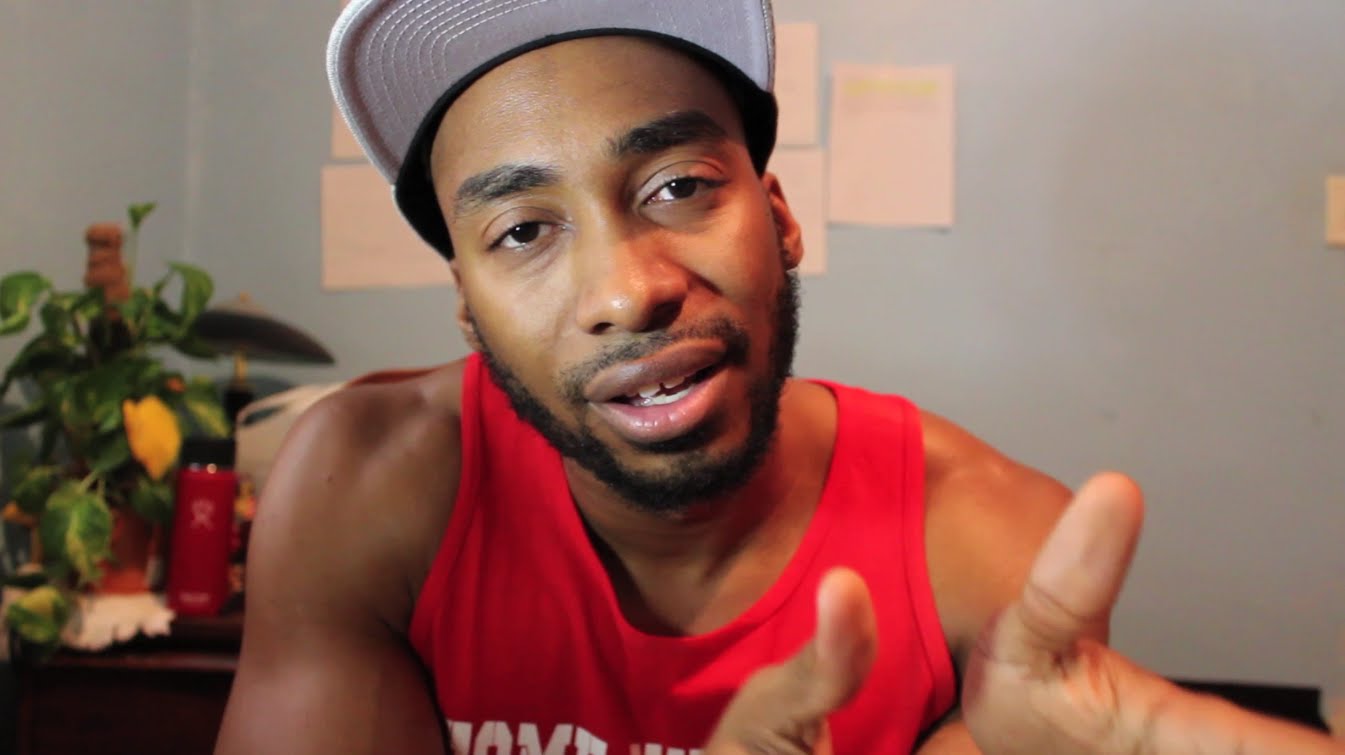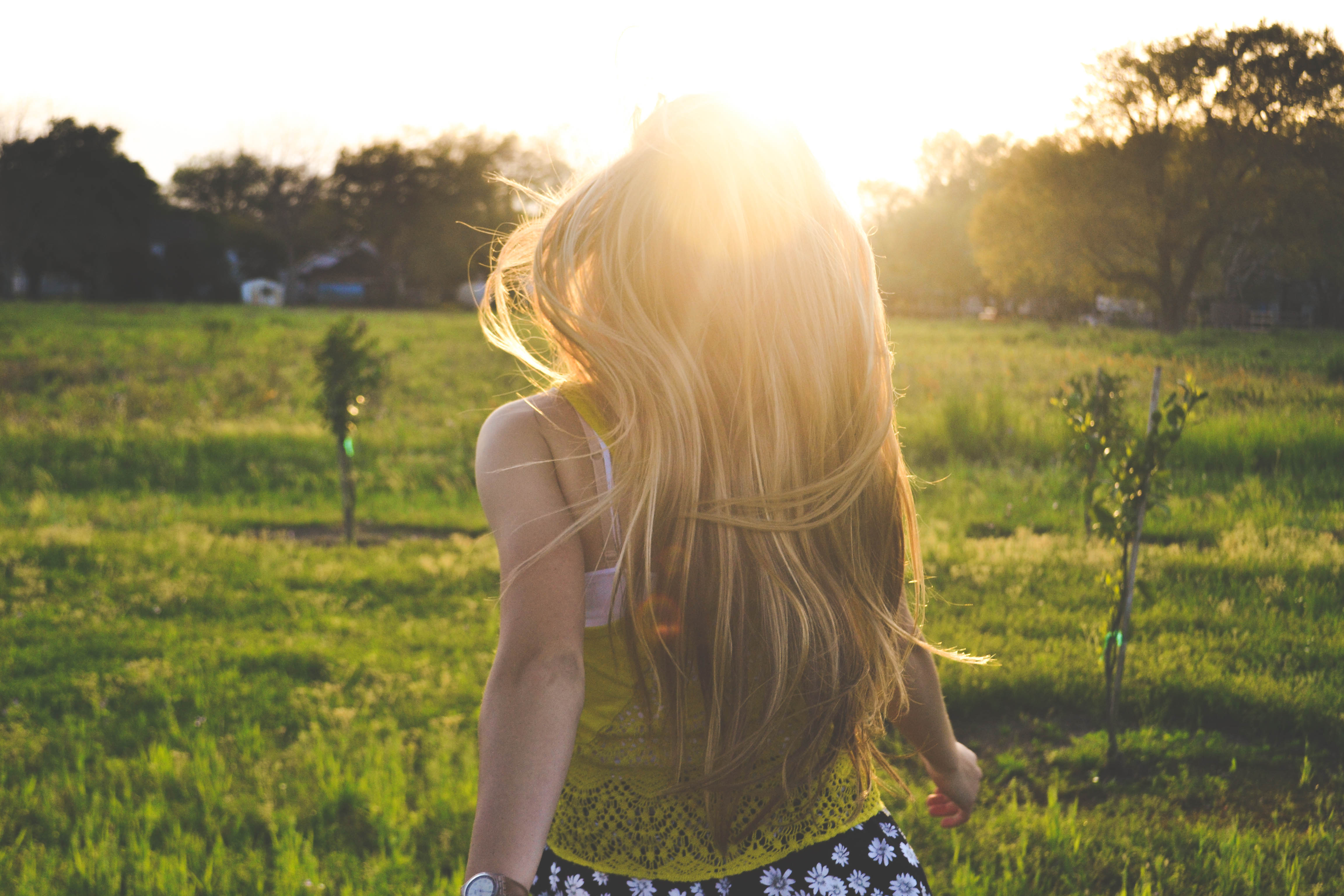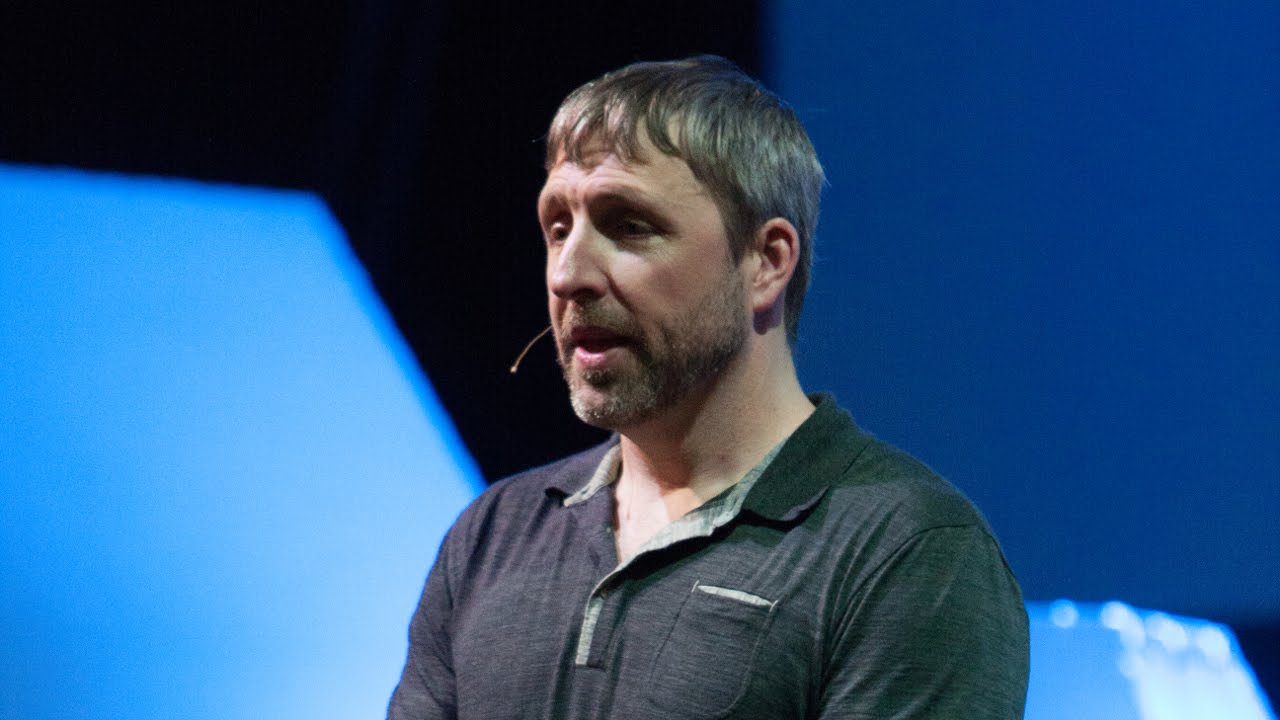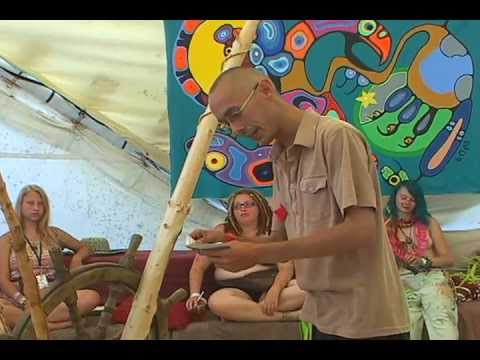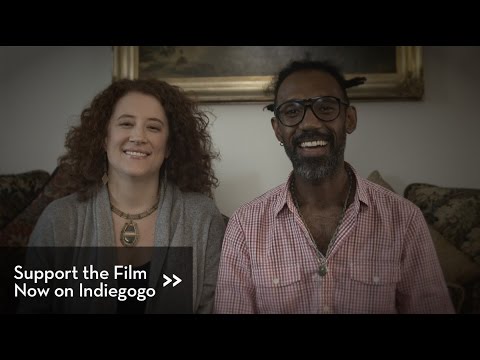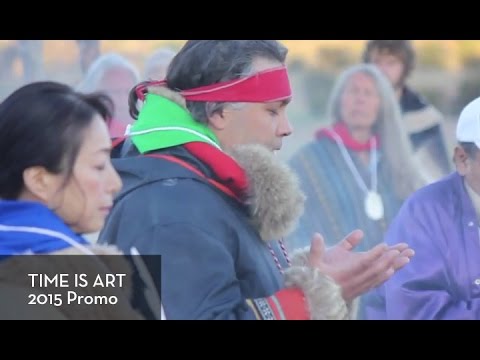Can Celebrity Voices Create Mass Environmental Awareness
Call Me Reminiscent I like to be reminded of how connected we are to all the particular systems and organisms whom we share the planet with. So I recently returned to an old channel called NatureIsSpeaking.org to admire Hi-Def scenes of this blue rock we call Earth. Helping in the build-up of admiration for our irrefutable symbiosis with air, oceans, rainforest, coral reef, etc. …
3 Powerful Ways to Experience a Radical Positive Shift in Your Consciousness
The idea of raising consciousness is an interesting thing: almost everyone has a desire to do it and yet there is no consensus as to what it actually means or entails. Every spiritual tradition has their own, often-contradictory philosophy and scientists are hardly in agreement as to what consciousness is or how it operates. But …
Neuroscience backs up the Buddhist belief that “the self” isn’t constant, but ever-changing
While you may not remember life as a toddler, you most likely believe that your selfhood then-your essential being-was intrinsically the same as it is today.
Buddhists, though, suggest that this is just an illusion-a philosophy that’s increasingly supported by scientific research.
“Buddhists argue that nothing is constant, everything changes through time, you have a constantly changing stream of consciousness,” Evan Thompson, a philosophy of mind professor at the University of British Columbia, tells Quartz. “And from a neuroscience perspective, the brain and body is constantly in flux. There’s nothing that corresponds to the sense that there’s an unchanging self.”
Neuroscience and Buddhism came to these ideas independently, but some scientific researchers have recently started to reference and draw on the Eastern religion in their work-and have come to accept theories that were first posited by Buddhist monks thousands of years ago.
One neuroscience paper, published in Trends in Cognitive Sciences in July, links the Buddhist belief that our self is ever-changing to physical areas of the brain. There’s scientific evidence that “self-processing in the brain is not instantiated in a particular region or network, but rather extends to a broad range of fluctuating neural processes that do not appear to be self specific,” write the authors.
Thompson, whose work includes studies of cognitive science, phenomenology and Buddhist philosophy, says this is not the only area where neuroscience and Buddhism converge. For example, some neuroscientists now believe that cognitive faculties are not fixed but can be trained through meditation. And there may be scientific backing to the Buddhist belief that consciousness extends into deep sleep.
“The standard neuroscience view is that deep sleep is a blackout state where consciousness disappears,” Thompson says. “In Indian philosophy we see some theorists argue that there’s a subtle awareness that continues to be present in dreamless sleep, there’s just a lack of ability to consolidate that in a moment-to-moment way in memory.”
Studies of meditators’ sleep patterns suggest this might indeed be the case. A study published in 2013 found that meditation can affect electro-physical brain patterns during sleep, and the findings suggest there could be capacity to “process information and maintain some level of awareness, even during a state when usually these cognitive functions are greatly impaired,” according to the researchers.
But neither neuroscience nor Buddhism has a definitive answer on exactly how consciousness relates to the brain. And the two fields diverge on certain aspects of the topic. Buddhists believe that there’s some form of consciousness that’s not dependent on the physical body, while neuroscientists (and Thompson), disagree.
But Thompson supports the Buddhists’ view that the self does in fact exist.
“In neuroscience, you’ll often come across people who say the self is an illusion created by the brain. My view is that the brain and the body work together in the context of our physical environment to create a sense of self. And it’s misguided to say that just because it’s a construction, it’s an illusion.”
Meditation for Beginners: 20 Practical Tips for Quieting the Mind : zen habits
Editor’s note: This is a guest post from Todd Goldfarb at the We The Change blog.
Meditation is the art of focusing 100% of your attention in one area. The practice comes with a myriad of well-publicized health benefits including increased concentration, decreased anxiety, and a general feeling of happiness.
Although a great number of people try meditation at some point in their lives, a small percentage actually stick with it for the long-term. This is unfortunate, and a possible reason is that many beginners do not begin with a mindset needed to make the practice sustainable.
The purpose of this article is to provide 20 practical recommendations to help beginners get past the initial hurdles and integrate meditation over the long term:
1) Make it a formal practice. You will only get to the next level in meditation by setting aside specific time (preferably two times a day) to be still.
2) Start with the breath. Breathing deep slows the heart rate, relaxes the muscles, focuses the mind and is an ideal way to begin practice.
3) Stretch first. Stretching loosens the muscles and tendons allowing you to sit (or lie) more comfortably. Additionally, stretching starts the process of “going inward” and brings added attention to the body.
4) Meditate with Purpose. Beginners must understand that meditation is an ACTIVE process. The art of focusing your attention to a single point is hard work, and you have to be purposefully engaged!
5) Notice frustration creep up on you. This is very common for beginners as we think “hey, what am I doing here” or “why can’t I just quiet my damn mind already”. When this happens, really focus in on your breath and let the frustrated feelings go.
6) Experiment. Although many of us think of effective meditation as a Yogi sitting cross-legged beneath a Bonzi tree, beginners should be more experimental and try different types of meditation. Try sitting, lying, eyes open, eyes closed, etc.
7) Feel your body parts. A great practice for beginning meditators is to take notice of the body when a meditative state starts to take hold. Once the mind quiets, put all your attention to the feet and then slowly move your way up the body (include your internal organs). This is very healthy and an indicator that you are on the right path.
8) Pick a specific room in your home to meditate. Make sure it is not the same room where you do work, exercise, or sleep. Place candles and other spiritual paraphernalia in the room to help you feel at ease.
9) Read a book (or two) on meditation. Preferably an instructional guide AND one that describes the benefits of deep meditative states. This will get you motivated. John Kabat-Zinn’s Wherever You Go, There You Are is terrific for beginners.
10) Commit for the long haul. Meditation is a life-long practice, and you will benefit most by NOT examining the results of your daily practice. Just do the best you can every day, and then let it go!
11) Listen to instructional tapes and CDs.
12) Generate moments of awareness during the day. Finding your breath and “being present” while not in formal practice is a wonderful way to evolve your meditation habits.
13) Make sure you will not be disturbed. One of the biggest mistakes beginners make is not insuring peaceful practice conditions. If you have it in the back of your mind that the phone might ring, your kids might wake, or your coffee pot might whistle than you will not be able to attain a state of deep relaxation.
14) Notice small adjustments. For beginning meditators, the slightest physical movements can transform a meditative practice from one of frustration to one of renewal. These adjustments may be barely noticeable to an observer, but they can mean everything for your practice.
15) Use a candle. Meditating with eyes closed can be challenging for a beginner. Lighting a candle and using it as your point of focus allows you to strengthen your attention with a visual cue. This can be very powerful.
16) Do NOT Stress. This may be the most important tip for beginners, and the hardest to implement. No matter what happens during your meditation practice, do not stress about it. This includes being nervous before meditating and angry afterwards. Meditation is what it is, and just do the best you can at the time.
17) Do it together. Meditating with a partner or loved one can have many wonderful benefits, and can improve your practice. However, it is necessary to make sure that you set agreed-upon ground rules before you begin!
18) Meditate early in the morning. Without a doubt, early morning is an ideal
time to practice: it is quieter, your mind is not filled with the usual clutter, and there is less chance you will be disturbed. Make it a habit to get up half an hour earlier to meditate.
19) Be Grateful at the end. Once your practice is through, spend 2-3 minutes feeling appreciative of the opportunity to practice and your mind’s ability to focus.
20) Notice when your interest in meditation begins to wane. Meditation is
hard work, and you will inevitably come to a point where it seemingly does not fit into the picture anymore. THIS is when you need your practice the most and I recommend you go back to the book(s) or the CD’s you listened to and become re-invigorated with the practice. Chances are that losing the ability to focus on meditation is parallel with your inability to focus in other areas of your life!
Meditation is an absolutely wonderful practice, but can be very difficult in the beginning. Use the tips described in this article to get your practice to the next level!
Read more about personal development from Todd Goldfarb on his blog, We The Change.
Staring Into Someone’s Eyes For 10 Minutes Leads To Altered State Of Consciousness
A psychologist in Italy has figured out how to induce a drug-free altered state of consciousness by asking 20 volunteers to sit and stare into each other’s eyes for 10 minutes straight.
Not only did the deceptively simple task bring on strange ‘out of body’ experiences for the volunteers, it also caused them to see hallucinations of monsters, their relatives, and themselves in their partner’s face.
The experiment, run by Giovanni Caputo from the University of Urbino, involved having 20 young adults (15 of which were women) pair off, sit in a dimly lit room 1 meter away from each other, and stare into their partner’s eyes for 10 minutes.
The lighting in the room was bright enough for the volunteers to easily make out the facial features of their partner, but low enough to diminish their overall color perception.
A control group of 20 more volunteers were asked to sit and stare for 10 minutes in another dimly lit room in pairs, but their chairs were facing a blank wall.
The volunteers were told very little about the purpose of the study, only that it had to do with a “meditative experience with eyes open”.
Once the 10 minutes were up, the volunteers were asked to complete questionnaires related to what they experienced during and after the experiment. One questionnaire focused on any dissociative symptoms that the volunteers might have experienced, and another questioned them on what they perceived in their partner’s face (eye-staring group) or their own face (control group).
is a term used in psychology to describe a whole range of psychological experiences that make a person feel detached from their immediate surroundings. Symptoms such as a loss of memory, seeing everything in distorted colors, or feeling like the world isn’t real can be brought on by abuse and trauma; drugs such as ketamine, alcohol, and LSD; and now, apparently, face-staring.
“The participants in the eye-staring group said they’d had a compelling experience unlike anything they’d felt before,” Christian Jarrett writes for the British Psychological Society’s Research Digest.
Reporting in journal , Caputo says the eye-staring group out-scored the control group in all the questionnaires, which suggests that something about staring into another human being’s eyes for 10 uninterrupted minutes had a profound effect on their visual perception and mental state.
“On the dissociative states test, they gave the strongest ratings to items related to reduced color intensity, sounds seeming quieter or louder than expected, becoming spaced out, and time seeming to drag on. On the strange-face questionnaire, 90 percent of the eye-staring group agreed that they’d seen some deformed facial traits, 75 percent said they’d seen a monster, 50 percent said they saw aspects of their own face in their partner’s face, and 15 percent said they’d seen a relative’s face.“
The results recall what Caputo when he performed a similar experiment with 50 volunteers staring at themselves in a mirror for 10 minutes. The paper, entitled Strange-Face-in-the-Mirror Illusion, reports that after less than a minute, the volunteers started seeing what Caputo describes as the “strange-face illusion”.
“The participants’ descriptions included huge deformations of their own faces; seeing the faces of alive or deceased parents; archetypal faces such as an old woman, child or the portrait of an ancestor; animal faces such as a cat, pig or lion; and even fantastical and monstrous beings,” Susana Martinez-Conde and Stephen L. Macknik write for Scientific American. “All 50 participants reported feelings of ‘otherness’ when confronted with a face that seemed suddenly unfamiliar. Some felt powerful emotions.”
According to Jarrett at the British Psychological Society , while the eye-staring group of this most recent experiment only scored on average 2.45 points higher than the control group in their questionnaires (which used a five-point scale where 0 is “not at all” and 5 would be “extremely”), Caputo says the effects were stronger than those experienced by the 2010 mirror-staring volunteers.
So what’s going on here? Martinez-Conde and Macknik explain that it’s likely to do with something called neural adaptation, which describes how our neurons can slow down or even stop their responses to unchanging stimulation. It happens when you stare at any scene or object for an extended period of time – your perception will start to fade until you blink or the scene changes, or it can be rectified by tiny involuntary eye movements called microsaccades.
Information’s and image from : Science Alert
This zero-waste grocery store has no packaging, plastic or big-name brands
Forget Whole Foods.
The Original Unverpackt is the first Zero Waste Grocery store in the World.
The idea came to be when founders Sara Wolf and Milena Glimbovski were determined to create “something impossible.” They used crowd funding to back the store and decided to challenge the traditional shopping experience. The store’s mission is to stop contributing to waste that’s caused by food packaging by selling groceries in a sustainable manner (16 million tonnes per year in Germany alone).
Three studies conducted in 2013 found that 12 million tonnes of food waste is accumulated annually amounting to a price tag of £19 billion a year. This figure isn’t only swelling landfills, but also contributes to 20 million tonnes of the nation’s greenhouse gas emissions annually.
Sara Wolf and Milena Glimbovski are the creators of Original Unverpackt
The same study states that 75% of this waste could have been easily sidestepped with more efficient infrastructure.
In terms of pricing, some of the products offered at Original Unverpackt are more expensive, mainly because they’re organic. But other items are comparable, if not cheaper than standard supermarkets. The “fill-your-own-container” idea can save customers money by preventing them from overspending on food. Customers can bring their own containers, such as tubs and recycled bags-which are also sold at the store-and pay based on the weight of the products.
Although many believe that the sustainable supermarket model is unlikely to reach North America anytime soon, awareness and demand for low-waste alternatives will undoubtedly speed up the process.
A customer shops at the Original Unverpackt store in Berlin
Sources: torontoist.com, wordpress.com, gannett-cdn.com, timesofoman.com
5 Simple But Powerful Daily Practices That Will Radically Improve Your Health, Wealth and Happiness
“Success is nothing more than a few simple disciplines, practiced every day; while failure is simply a few errors in judgment, repeated every day. It is the accumulative weight of our disciplines and our judgments that leads us to either fortune or failure.” — Jim Rohn Mainstream media tends to glorify success stories, making us …
Our Enduring Fascination with Synchronicity
‘ Time is Art ‘, a narrative documentary film-in-progress that explores synchronicity and the role of visionary art, is preparing for worldwide release in three languages on 11/11/2015. The film follows a writer’s metaphysical journey through inspiring urban and natural settings in California and New York guided by author, Graham Hancock, biologist, Rupert Sheldrake, Carl Jung historian Richard Tarnas, visionary artists Alex Grey and Allyson Grey, mystic, Toko-pa Turner and many other scientists, artists and activists. The transmedia project which also includes a book of the same name, comes at an important moment in new science, quantum physics and consciousness studies.
This year is the 63rd anniversary of Jung’s (1952) concept of synchronicity. “In response to the seemingly growing popularity of this concept, Princeton University Press, in 2010, decided to reissue the seminal publication Synchronicity: An Acausal Connecting Principle. Although a complete formulation of synchronicity was published only in 1952, Jung had used the term in his lectures as early as 1929 (Cambray, 2009).
 Carl Jung used synchronicity to refer to a meaningful coincidence of an outer event with an individual’s inner state in which there is no apparent causal relationship. The term consists of the Greek words for joined with and in time, suggesting a bond that takes place in temporal correspondence. Synchronicities are also associated with the uncommon and often consist of numinous, life-changing, and deeply spiritual experiences (Main, 2007); these synchronicities can play a critical role in an individual’s growth and personal transformation (e.g., Richo, 1998).” – Dan Hacoy
Carl Jung used synchronicity to refer to a meaningful coincidence of an outer event with an individual’s inner state in which there is no apparent causal relationship. The term consists of the Greek words for joined with and in time, suggesting a bond that takes place in temporal correspondence. Synchronicities are also associated with the uncommon and often consist of numinous, life-changing, and deeply spiritual experiences (Main, 2007); these synchronicities can play a critical role in an individual’s growth and personal transformation (e.g., Richo, 1998).” – Dan Hacoy
This year also marks the 32nd anniversary of the Police’s 1983 hit album “Synchronicity”. Early on in the making of our film ‘Time is Art’, I had a pretty wild synchronicity concerning the Police’s album. We were traveling back from the Berkshires in Massachusetts and had stopped at a funky looking restaurant serving questionable Mexican food. I think the owner mentioned she was either an ex Hollywood makeup artist or just liked to wear a ton of makeup. She literally looked as if she had come from a 1950’s hollywood set. The tiny place was packed full of a surprising amount of old magazines, art and furniture from the 50, 60’s and 70’s. In that moment I was thinking about the film, as it occupied my mind constantly, since we were still hashing it out through research, conversations and brainstorming sessions. There was a large stack of old Life Magazines and Rolling Stones from the and 70’s and 80’s. I looked through a few and by the third one I was just flipping the pages quickly and came to a page with an advertisement for The Police’s Synchronicity album!
At the time, even though I was a huge Police fan, I did not realize that their most popular album was called ‘Synchronicity’. For some reason I had not connected the dots, so for me this was confirmation that the project warranted more thought and research. (Whats unprecedented is that the album was so massively appealing that millions purchased it as well as the preceding four Police albums in numbers great enough to place all five on the 1983 sales chart simultaneously at year’s end.)

A quick survey of popular books and academic publications indicates that the idea of Synchronicity has never been more popular.
Just in the last year, several large international conferences have been held on synchronicity and related topics, including the Synchronicity: Matter & Psyche Symposium at Joshua Tree National Park where much of the film ‘Time is Art’ takes place. The upcoming Synchronicity Summit at Omega Institute in Rhinebeck, NY features a plethora of academics and researchers such as Jon Turk, PhD, and Neurosurgeon Eben Alexander, MD .
Besides synchronicity, the film also explores an alternative to the materialistic and exploitative money-driven society we are all expected to live in. Synchronicity shows us that there are other ways of understanding our role in the universe. When you think of someone and then 5 seconds later they call you, its not a coincidence. During our film shoot with Rupert Sheldrake he argued that synchronicity is also a bit like telepathy. In one of his books he talks about why dogs can sense that their owner is coming home. Elephants, horses and other animals flee and hide for cover hours before massive storms hit. How is this possible if all of life is not interconnected and communicating through unseen realms of reality?
‘Time is Art’ is meant to fuel and inspire this growing movement. Says ‘Time is Art’ co-director, Joél Mejia, “We want to contribute to the awakening in global consciousness that we are witnessing right now. To contribute to the increasing number of conversations about our understanding of time, space and interconnectedness that resonate with so many people right now.”
The title, ‘Time is Art’, coined by the visionary author, José Argüelles, whose work is a major inspiration for the film, is a twist on the catch phrase “time is money”. In the world of the film, “time” is unyoked from the relentless pursuit of material and capital gain and the audience is given an alternative framework: ‘What if we lived in a world where time is linked with creative potential and art?’-hence the film’s title, “Time is Art”.
In a recent article, Aaron Kase of Reset.me says of the film, “ultimately, the film is about how to shift from being caught up in an ego and success-driven society into a state of seeking peace and community anywhere we go.”
Brent Marchant via Vivid Life, also wrote “Even though many worthwhile films in this genre have been released in recent years, “Time is Art” could well prove to be one of the most important offerings in this vein.”
The filmmakers recently launched a teaser/extended trailer and are currently running an Indiegogo campaign that ends August 1st to raise post-production funds. The trailer, pitch video, and additional information about the production are available on the Indiegogo site, as well as pre-orders of the film, soundtrack and book plus perks like a special dinner with the filmmakers and passes to the premiere on 11/11/15 in NYC as thanks for contributing to the Indiegogo campaign.
The Time Feels Right

For those paying attention, we are living in extraordinary times. People have always made extraordinary art and overcome extraordinary challenges so why is now any different from the past? Self-awareness empowers the shift towards a more sustainable way of life where we are more connected to nature and to ourselves. Where traditional media has failed to inform us, independent voices have risen to educate the people about what is really going on. Technology puts content and the ability to make content within reach for anyone that has curiosity, creativity and discipline. The documentary film, Time is Art, was born from that combination of necessity and opportunity, seized by passionate creatives looking for a hungry audience with the hope that such important ideas are considered more and more legitimate in the mainstream. While it’s true that many of the claims we make are esoteric and mysterious in nature, if you check into any one of the artists, scholars, activists and scientists featured in the the film Time is Art, you’ll see they have plenty of legs to stand on. Their books, such as Rupert Sheldrake’s “The Science Delusion”, have a backing in science’s rigorous methods. We are making this film because it is imperative that these ideas get out into the mainstream if we are to continue to create a more balanced world that cares for the well being of the planet and it’s people.
It’s rare when everything lines up for the underdog documentary project and it’s under resourced creative team. It is also rare for an artist to be able to pinpoint the exact source of their ideas or even how they ultimately end up executing ideas that were once completely abstract. There is obviously vision and talent involved, but sometimes there is something more to it – what many artists call a “divine spark” of inspiration – that which is mysterious and oftentimes, unexplainable. It is important to note that this entire transmedia project has been a co-creation between a group of talented artists, each contributing an important skill throughout the production process and trusting the very phenomenon we were documenting; synchronicity. This mysterious phenomenon is a template, a guide, to our creative process that allows things to just happen, to breathe and flow as opposed to forcing the outcome. The exploration of the nature of time has truly become the driving force behind many of our artistic choices.
Visionary art, that which is ahead of its time, is often misunderstood and overlooked. Yet over time it eventually reveals its secrets to the world. Although we are at a very peculiar moment in human history, the time feels right for telling a story of this kind. Millions of people buy books, read articles, and watch documentaries about spirituality and supernatural experiences because they’ve had something unexplainable happen to them and want to explore it further. We have come to realize over time that we all share this connection and we call it the “collective dream”. The spiritual path we follow can be better understood through art, community, and conversation. Thus, the transmedia project becomes a tool we can use at conferences and retreats for individuals who want to explore these topics more in depth. We plan to develop and facilitate workshops around the world, screening the film and assisting groups of people in co-creating transformative projects together. This type of direct action is happening all over the world. People are starting schools, retreat centers, community centers, wildlife sanctuaries, permaculture farms, building earthships and ecovillages. The time feels right and we are confident our film can reach an international audience itching for this kind of experience.
The time doesn’t feel right every second of the day but in general, it’s feeling more like we are co-creating a new timeline. Life is a rollercoaster ride and the moment you receive the truth and think you’ve reached the end of the ride, someone tells another big lie, creating more karma and suddenly the ride is going in reverse. Maybe that’s why its helpful, even on just a psychological level, to be more open to the cyclical patterns of nature, the hidden meanings of symbols, and the dreamlike overlapping of people, places, and moments. This is a major theme in our forthcoming film, Time is Art.
There are many prophecies about the coming age. This fascinating article, Earth Changes and Hopi World-Ages By Gary A. David via Graham Hancock’s website (Graham is also featured in Time is Art), helps one gain a larger understanding of the cycles of time.
“We are currently living at the end of the Hopi Fourth World, where chaos and a life out of balance with the ways of the Creator are the norm. Hopi elders believe, however, we are soon to enter the next world-age (Fifth World), where peace, prosperity, and spirituality shall reign. Some Hopi prophets forecast that fire will again be the purifying agent that ultimately brings us into this new era. In biblical terms it will be “a new heaven and a new earth.” Grandfather David Monongye, Fire Clan member from the village of Hotevilla, Arizona, stated the following during the 1970s when he was over 90 years old.”
Another Hopi teaching and for me, one of the most powerful prophecies from the Hopi which also resonates with the creators of the film, who are mostly women, refers to the rise of the divine feminine.
“The wave that we ride is the emergence of the “grandmother archetype” that is remembered in the ancient stories… a powerful metaphor, a truly sacred symbol that arises now from the depths of the psyche of the individual and of society. It is being activated and embodied by circles of elder women on many fronts, in many locales, and it holds the seeds of an entirely new consciousness that stands in stark contrast to the prevailing paradigms of our current situation as a human family. I like to call this the Age of the Grandmothers.” – GrandmothersSpeak.com
Meditating on Time is Art
Meditation is a modality that can sometimes feel as if its being shoved down your throat. You hear about it and read about it all the time. My first exposure was through the filmmaker, David Lynch, some ten years ago. He travels the world doing lengthy presentations on transcendental meditation. It’s a long story, but at the time, my cousin who was also interested in meditation suggested we go to one of his talks at UCLA. It was totally last minute and hundreds of people were in line. At one point I think we finally figured out that it was, of course, completely sold out. But the universe does it’s thing and somehow I ended up at the stage entrance where people working the event were taking a smoke break. The next thing I knew, I walked in with them and sat down at an empty seat. No one blinked an eye, because it was as if I was meant to be there and they seemed to know this, too. A minute later with his massive head of hair, there was David Lynch on stage literally blowing my mind. Besides the usual rants about how Hollywood ruins films, he talked about how meditation helps him channel his increasingly risky ideas into his films through a “stream of consciousness” technique. He even had a physician on stage hooking people up to some machine that showed how the brain waves were effected during meditation.
According to the David Lynch Foundation, Transcendental Meditation doesn’t focus on breathing or chanting, like other forms of meditation. Instead, it encourages a restful state of mind beyond thinking.
 Stevie Wonder also sang about TM in one of his most popular songs “Jesus Children of America” from his mind blowing 1973 album, Innervisions. The lyric “transcendental meditation speaks of inner preservation” used to loop in my mind for hours after listening to that song. I thought, wow, Stevie was really tapped in to the incredible creative energy of the 70’s and I need to meditate so I can write songs as profound as he did during that time.
Stevie Wonder also sang about TM in one of his most popular songs “Jesus Children of America” from his mind blowing 1973 album, Innervisions. The lyric “transcendental meditation speaks of inner preservation” used to loop in my mind for hours after listening to that song. I thought, wow, Stevie was really tapped in to the incredible creative energy of the 70’s and I need to meditate so I can write songs as profound as he did during that time.
I tried TM but soon realized it wasn’t really “hooking me” so I gave it up. I tried chanting with a Buddhist organization and it was a form of mediation to some degree but that didn’t seem to work for me either.
Meditation works differently for everybody. For some people, they need to do 20 Ayahuasca ceremonies and ask for help with their meditation practice. Some people need to do a 2 hour yoga class to relax enough to actually mediate. I love yoga, and I can typically meditate for a few minutes after a class but in order to really “tap in” I needed to step it up a notch.
One day I discovered a group sound meditation session lead by Alexandre Tannous. He uses gongs and tuning forks to “tune” the body. Not long after a session with Alexandre, I formed my dream project, a band called Dream Circle with my husband Joel. Alexandre was also the inspiration for the first webisode that eventually turned into the feature documentary, Time is Art. Watch the clip below.
Fast forward many years later. My husband Joel and I had been editing Time is Art for months. When it came time for story editing, the most difficult part of the process, the three core collaborators did a private sound meditation at Golden Drum to help smooth out the tension. We are all very opinionated with strong personalities that often talk over each other so it was important to get in sync. We were also told after the session that creating an alter in alignment with the four directions before a major meeting or editing session will help the collaboration process.
Just to relax, I started listening to a particular mantra with tibetan bowls. Not long after the sound bath we started each editing session by creating an alter and listening to this recording which turned out to be the Gayatri Mantra. In the beginning I didn’t know what it meant but felt transformed every time I would meditate to it for even just a few minutes which goes to show you just how powerful it is.
The Gayatri Mantra is revered by both Buddhists and Hindus worldwide and is a Vedic Sanskrit verse from a hymn of the Rigveda. It is considered to be a supreme vehicle for gaining spiritual enlightenment. The longer form of the mantra activates all seven major Chakras and connects them to the seven great spiritual realms of existence.
A modern translation of the entire mantra says, “I invoke the Earth Plane, The Astral Plane, The Celestial Plane, The Plane of Spiritual Balance, The Plane of Human Spiritual Knowledge, The Plane of Spiritual Austerites, and The Plane of Ultimate Truth. Oh, great Spiritual Light which is the brilliance of all Divinity, we meditate upon You. Please illumine our minds.” By chanting this mantra, Divine spiritual light and power is infused in each of the seven chakras and connects them to the Spiritual Realms. The last part infuses our minds, hearts and souls with the power of the spiritual light that created the Universe.
After a few months of consistent meditation to this recording I began to live the messages in the film. Time truly became less about rushing and trying to get things done. I’ve learned to slow down and take things as they come. My creative ideas have always been more then I can handle (or anyone else for that matter, just ask my husband). When the time comes I know all the documentary treatments, the screenplays, the events, the workshops, the albums, the trips all over the world will be executed when they are ready. There’s no rush because there’s plenty of time, especially since there is really no time when you live the mantra ‘Time is Art’.







